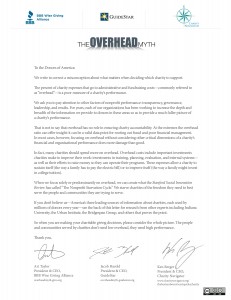 I spent a decent amount of time last week in the car. When I do that, I typically listen to National Public Radio (NPR), which in the Chicago market is WBEZ 91.5 FM. So, all week long I heard how they were approaching the end of their fiscal year and how they need to hit their pledge drive goal.
I spent a decent amount of time last week in the car. When I do that, I typically listen to National Public Radio (NPR), which in the Chicago market is WBEZ 91.5 FM. So, all week long I heard how they were approaching the end of their fiscal year and how they need to hit their pledge drive goal.
When I woke up this morning, I had a few thoughts racing through my head:
- OMG . . . it is July! How did THAT happen?
- I wonder if WBEZ made its pledge drive goal?
- I wonder how many other non-profits that don’t have June 30th year end financials are preparing for their December 31st year-end push?
I remember when I was on the front line and making decisions about fundraising matters. I typically wanted my year-end fundraising efforts and mailings to hit the post office in the beginning of November.
When I gave donors a few weeks before Thanksgiving to consider what they want to do with their year-end charitable giving, it usually worked out better. I tested all sorts of different launch times over the years, and the beginning of November always produced the best results.
So, if your agency follows the same blueprint . . . guess what? You only have four months left to get all of your ducks in a row.
My best advice is to get to work NOW and avoid the last minute rush. Why? Because in my experience the last minute rush always resulted in unexpected hiccups and delays in getting the mailings to the post office.
I’m not suggesting that you write your letter today (but I wouldn’t discourage it either), but there are things you can start doing now that will help you later. Here is a short laundry list of those things:
- Determine your theme.
- Put together your project management plan and establish deadlines.
- Write your internal case for support, which will be the basis of your letter and package.
- Pull together a focus group of donors and test your case for support.
- Use the input that you get back from your donors to tweak your messaging and theme.
- If you like to incorporate a client story into your year-end appeal, then start identifying the client and their story now.
- We all know that the mailing list is the biggest factor in your success. So, start building your list today. It takes time to wrestle with your donor database and work with a mail house.
- Plan on mailing out a cultivation / stewardship letter four to six weeks prior to mailing your year-end appeal. Start developing that messaging and package today.
- Use social media to cultivate and steward your year-end donors. Develop a three month campaign that leads up to and culminates in the launch of your appeal in early November. This obviously starts NOW.
Your agency is probably preparing to march in a Fourth of July parade in the next few days, and year-end thoughts are probably far away, but don’t blink! Because Santa Claus will be coming down the chimney any day now.
You know I’m right!
Still not convinced? Well, consider the fact that more than one-third (and I’ve recently read it could be as big as one-half) of all charitable giving happens in the fourth quarter during the holiday season.
I’ll leave you with this thought and popular expression: “Prior proper preparation prevents piss poor performance.” I’ve heard it referred to as the Seven P’s.
When does your agency start preparing for its year-end appeal? What goes into your planning? What have been some of the biggest challenges you’ve faced? When do you plan on starting this year?
Please use the comment box below to share your thoughts because we can all learn from each other.
Here’s to your health!
Erik Anderson
Founder & President, The Healthy Non-Profit LLC
www.thehealthynonprofit.com
erik@thehealthynonprofit.com
http://twitter.com/#!/eanderson847
http://www.facebook.com/eanderson847
http://www.linkedin.com/in/erikanderson847


 AND THEN IT WENT VIRAL . . .
AND THEN IT WENT VIRAL . . . Last year I wrote a post titled “
Last year I wrote a post titled “
 Episode #239 . . .
Episode #239 . . .  Yesterday, an email washed into my inbox from someone named Katie. She asked me to please use my megaphone (aka the DonorDreams blog platform) to tell the world about a corporate giving promotion by a
Yesterday, an email washed into my inbox from someone named Katie. She asked me to please use my megaphone (aka the DonorDreams blog platform) to tell the world about a corporate giving promotion by a 

 Welcome to O.D. Fridays at DonorDreams blog. Every Friday for the foreseeable future we will be looking at posts from John Greco’s blog called “
Welcome to O.D. Fridays at DonorDreams blog. Every Friday for the foreseeable future we will be looking at posts from John Greco’s blog called “ Too many resource development plans (aka fundraising plans) are written behind close doors without any input from those who we depend upon to help with implementation. And then we wonder why no one is jumping in to help and why board members are acting as if to say: “That’s not what I agreed to do … go implement YOUR plan.”
Too many resource development plans (aka fundraising plans) are written behind close doors without any input from those who we depend upon to help with implementation. And then we wonder why no one is jumping in to help and why board members are acting as if to say: “That’s not what I agreed to do … go implement YOUR plan.”
 I love this time of the year because
I love this time of the year because  In a nutshell, slow-and-steady progress which is a re-run from the last many years of Giving USA reports. Is it just me or is this beginning to feel a little bit like that
In a nutshell, slow-and-steady progress which is a re-run from the last many years of Giving USA reports. Is it just me or is this beginning to feel a little bit like that 


